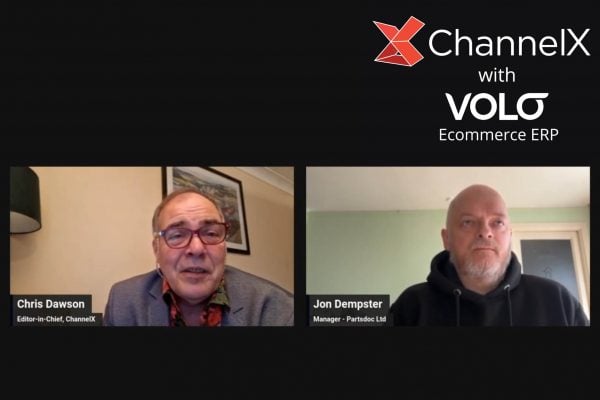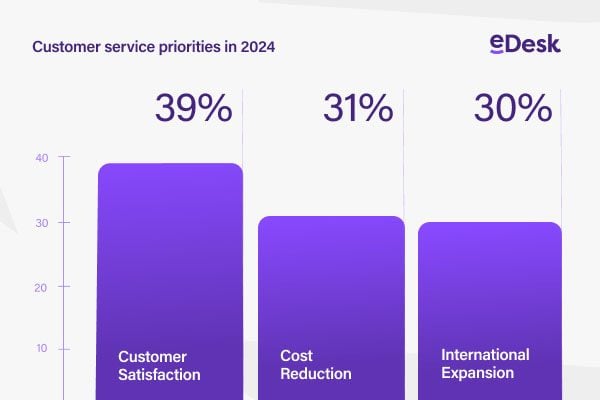 Today, we are kicking off a new monthly series Know your data series, penned by Scott Bagnall, Head of Product at Volo. In this the first of the series Scott looks at your Best Sellers and what you should be considering to maximise sales.
Today, we are kicking off a new monthly series Know your data series, penned by Scott Bagnall, Head of Product at Volo. In this the first of the series Scott looks at your Best Sellers and what you should be considering to maximise sales.
Following on from our recent webinar with Volo, “Automate to Accumulate – How to Scale your Business“, there was a lot of interest in the various reports and feeds available to Volo users. If you’re a Volo customer then the reports are all available to you in the Vision reporting and analytics module, but for non-Volo users you should still be considering the same factors in order to scale and grow your business.
Volo: Know your data series – Best Sellers
The daily life of every ecommerce owner-manager or manager will involve checking the daily sales figures, ideally within an easy-to-view dashboard showing all your key information front and centre. How did we do yesterday? What sold well? Anything I need to watch for? The more unpredictable or turbulent the times, the more often we should be checking, perhaps multiple times a day.
You need to be close to your best sellers because these are the items that are bringing you the most success. It follows that you should focus on optimising the listings for these items, as well as providing exceptional after-sales service to delight your buyers and bolster your marketplace status. But there’s more to simply looking at your best sellers, so let’s delve a little deeper into the data and see what it can tell us.
Concentration of best sellers
First, what constitutes a ‘best seller’ for you? Is it your top 5, your top 10 or your top 20 products? It’s important for you to look at how your sales are distributed across your products. If your top 20 best sellers account for 80% of your total sales, for example, then that’s a good number to focus your efforts on. But if your top 10 best sellers only account for 20% of your total sales, let’s say, then you don’t have the same kind of concentration and you’re faced with optimising much more of your product range.
Similarly, if your top 5 best sellers represent 90% of your total sales, you have a very tight concentration and you’re relying on a very small product range for the bulk of your sales. In this instance you need to make doubly sure you can source these items quickly and in the numbers you need, while also trying to improve the sales of other products so that you’re spreading your risk. Here’s the bottom line, literally: the margins on your best seller products are of the utmost importance as they’re the drivers for the business, so you can’t afford to be losing money on them.
Supply chain security
Speaking of sourcing, it’s a useful exercise to see how your best sellers are distributed across your suppliers. If you see all your best sellers are concentrated over one or two suppliers, then you potentially have one or two single points of failure. In times of unpredictability, re-order lead times can vary markedly, as can your suppliers’ ability to make or get your best-selling products.
It pays to keep an up-to-date file of potential suppliers, in case you need to source your best sellers from other suppliers if supplier A – or suppliers A and B – gets into difficulties. Having these alternatives in your back pocket allows you to move more quickly if there’s a problem with your supply chain.
Best seller trending
Now that you’ve identified your best sellers, what’s the trend like for them? Are they trending up or down? Knowing the velocity of your best sellers in the current period compared to the previous period is important, because if the velocity is increasing then this shortens the amount of time you have left to get stock in.
You don’t want to be in a position where you’ve got 5 days left of your best-selling items and you know the re-order lead time is 15 days. If your ecommerce system allows you to build in rules, then you can automate the triggering of notifications when stock is running low at a given velocity. Alternatively, you could even get your system to place the re-order automatically, so that you don’t run out of your best sellers, even if there’s an overnight run on one of your products during a period of volatility.
Bundles and borders
Kits and bundling are a great way of increasing both revenues and your product range. Have a look at your best sellers. Do any of them sit together as a potential bundle that you could market to your buyers? The best way to generate more money is to add more SKUs, and by bundling products together you’re able to offer more SKUs to customers without having to buy any more stock or take a risk on purchasing new products. You’ll also be increasing your margins, and your buyers will be grateful for the saving on shipping costs. Better still, can you bundle one or more of your slower moving items with your best sellers? This helps you shift your slower-moving stock and brings in more cash.
Don’t forget that you can analyse your best sellers across a range of parameters. We’ve already talked about slicing your data by supplier, and it’s a useful exercise to look at where the orders are coming from. Analysing your best sellers cross-border will let you know if your best sellers are concentrated in a particular county or region. Your best sellers may differ country to country, effectively increasing the amount of best sellers you have to offer. Conversely, in turbulent times, knowing that a particular country where you sell well is facing an economic, political or health-related upheaval can alert you to potential problems. A last point on cross-border: price points may also be different, so don’t ‘blanket price’ your items based on your UK prices or you may lose out on possible extra margin. Price your products based on the market you’re selling in.
Marketplaces and seasons
Knowing where your orders are coming from is one thing, but you probably care even more about what route they came to you. If you’re selling via web stores and marketplaces, you should also analyse how your best sellers perform across your different channels. You make more margin selling on your website as you don’t have to pay marketplace fees, so consider either passing this saving onto your customers to encourage loyalty or spending that money on something like Google shopping to drive more traffic to those products on your website.
All marketplaces are different and listing best practices vary, of course, between them. Some categories are better suited to certain channels, but a disparity in your best sellers between your marketplaces that you can’t immediately account for may alert you to a listing or other issue that you’ll want to correct.
Many of our sellers are in seasonal businesses. If you’re planning for your busy period , it’s worth checking out what your best sellers were for your last high season. Are they likely to be best sellers again this season? What new products will rival them? Analysing your best sellers over different time periods in the past will help you plan for the future.
Drill down to the details
Finally, don’t simply stop at the analysis of the best-selling products themselves. Our customers regularly take their best seller reports and drill down through each Master SKU to see how the individual sub-SKUs and variations performed. What sizes, colours or models sold the best? Which variations didn’t sell? This intel accurately informs both your marketing and your stock re-ordering.
So, you might know the who, what, where and how of your best sellers, but the when is important too. Look at the distribution of your best seller orders over days of the week, and hours of the day. When you know the peaks and troughs of your high volume items, you can better plan your operations accordingly.
Look out for our article next month, where we’ll talk about sales velocity.








